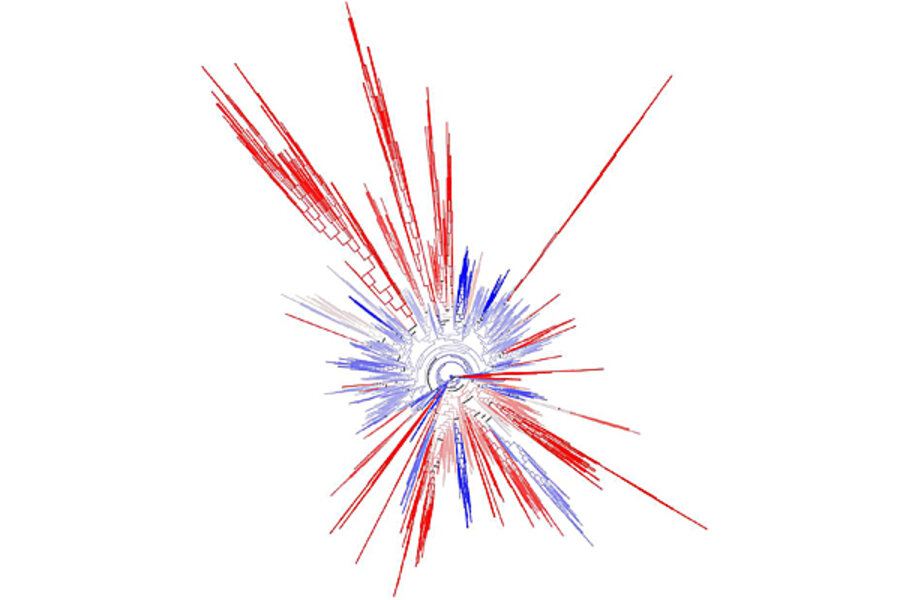Study links speciation to changes in body size in fish
Loading...
Biologists have long observed that groups of organisms with lots of species tend to be more anatomically diverse than groups with only a few species.
For instance, there are just seven species of garfishes, with the smallest, the spotted gar, growing to about two feet as an adult and the largest, the alligator gar, measuring about five times longer.
By contrast, the family that includes salmon, trout, and whitefishes comprises more than 200 species, with the smallest being just five inches long and the largest measuring about 6-1/2 feet, or 15 times longer.
What’s more, groups that have few species tend to remain anatomically stable over time. In “The Origin of Species,” Charles Darwin memorably described the gar, along with lungfishes and platypuses, as examples of “living fossils.”
Evidence for this apparent link between speciation and morphological change has remained mostly anecdotal, however, until now. A study of almost 8,000 species of ray-finned fishes confirms biologists' suspicions: The faster a fish’s lineage splits into multiple species, the faster those species' physical traits diverge.
"The fastest speciating fish typically also had the fastest rate of size evolution," said UCLA biologist Michael Alfaro, one of the study's two lead authors, in a press release. "It didn’t seem to matter whether they were freshwater or marine fish, or lived in cold or warm environments – the correlation was amazingly consistent.”
The study, published this week in the journal Nature Communications, looked at DNA sequence data and size variations of 7,864 species of ray-finned fishes, a class that represents almost all fishes and about half of all vertebrate species. The data set was so large that the researchers had to develop new software just to analyze it.
"We're basically validating a lot of ideas that have been out there since Darwin, but which had never been tested at this scale due to lack of data and the limits of existing technologies," said University of Michigan biologist Daniel Rabosky, the study's other lead author, in a press release.
The study's findings are consistent with the well-known hypothesis called punctuated equilibrium, which posits that evolutionary changes happen suddenly over a relatively short period of time – say thousands of years as opposed to millions – followed by long periods in which there is little change.
While it’s long been known that some lineages are capable of rapidly diversifying in response to environmental opportunities – Darwin’s 15 species of Galapagos finches are the most famous example of such so-called adaptive radiation – these findings indicate that the link between evolvability and speciation could be widespread throughout the animal kingdom.
But the direction of causation is unclear: “Does speciation drive morphological change, or does morphological change drive speciation?” asks co-author Brian Sidlauskas, an ichthyologist at Oregon State University. “It will be really exciting to try to tease that out.”
While this study analyzed only fish, the authors suspect that this pattern could hold for all living things.
"We're beginning to glimpse a phenomenon that might underlie the evolutionary process across the whole diversity of life," said Dr. Sidlauskas.







